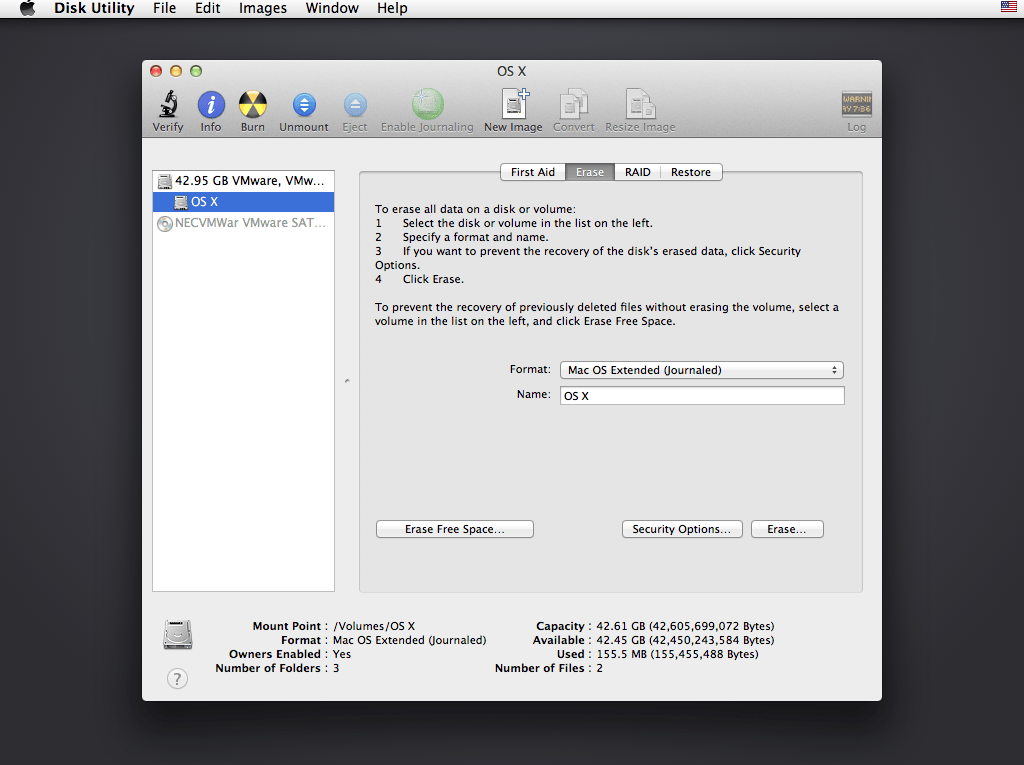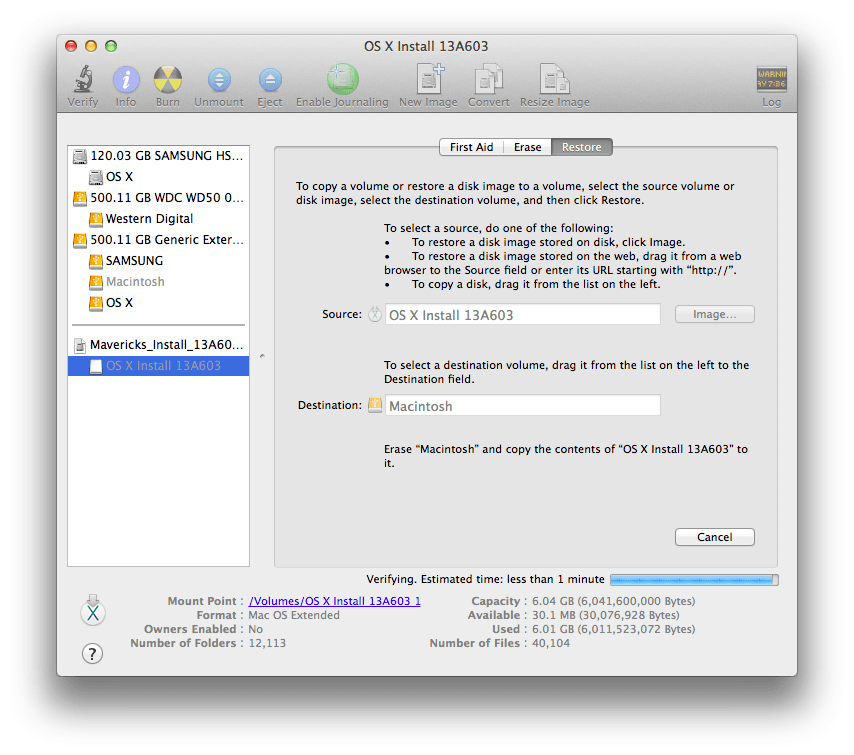
Then it all started working miraculously (seems I just hadn't started it?!). bin.Īnyone reading this after installing MySQL with Homebrew may have experienced this issue:Īnd then found their way here after the final instruction didn't work. This option must specify a directory path location of the directory. Make sure you're in /usr/local/Cellar/mysql// before running the script. Mysql_install_db -base-dir=/usr/local/bin/Īnnoyingly, this just means you have to be in the right directory to execute this. Level of the extracted archive, or pass the -basedir option If you are using a binary release, you must either be at the top
#Mysql install for mac osx 10.9.5 software
If you compiled from source, you need to run 'make install' toĬopy the software into the correct location ready for operation. Mysql_install_db cannot find file I am trying to use mysql_install_dbįATAL ERROR: Could not find. You have to create a symlink to your mysql installation if it is not the most recent version of mysql. Once its saved you can type in mysql to bring mysql prompt in your terminal. The Terminal is now configured to read the MySQL commands from $PATH which is placed in the. # Ensure user-installed binaries take precedenceĤ- Refresh Terminal using $ source ~/.bash_profileĥ- To verify, type in Terminal $ mysql -versionĦ- It should print the output something like this:
#Mysql install for mac osx 10.9.5 code
bash_profileĢ- Add the following PATH code to the. bash_profile by adding the MySQL $PATH as the following:ġ- Open Terminal then $ nano. To add that to your PATH variable so you can just run mysql without specifying the path That means /usr/local/mysql/bin/mysql is not in the PATH variable.Įither execute /usr/local/mysql/bin/mysql to get your mysql shell, This tells our terminal to reload that particular file. If you are not running first command export directly but just running second in order to persist it? Than for current running instance of terminal you have to, bash_profile is loaded respectively and export that we appended above is run & thus a our global $PATH gets updated and we get all the commands inside /usr/local/mysql/bin. So now as we noted above every-time we open terminal or instance of terminal our dotfiles are loaded. What we are doing is saving result of echo i.e. bash_profile is one of the primary known dotfile.Įcho 'export PATH=$PATH:/usr/local/mysql/bin' > ~/.bash_profile So yes by now you get the point what we are going todo. I like to think of it's as sets of thing passed to constructer every-time a new instance of terminal is created ( Again an assumption but close to what it might be doing ). You might be aware that our terminal using something called dotfiles to load configuration on terminal initialisation. So we have to persist concat in our path. Now we need to have our mysql binaries exported every-time we use terminal. And if we reopen terminal we won't have access to our command again because last when we exported, it was stored in primary memory which is volatile. So upon close we lose the new assignment. Think of one terminal window as one instance of program and maybe something like $PATH is class variable ( maybe ).

This way after executing it all the commands inside /usr/local/mysql/bin are available to us. So export a variable PATH with value old $PATH concat with new bin i.e. If you break it down, export is self explanatory. Turns out MySql doesn't do it upon install so we manually have to do it. Now usually programs upon installation takes care of updating PATH & telling your terminal that hey i can be all commands inside my bin folder.


This different folder locations are stored inside one Global variable i.e. bin folder has lots of executable files inside it.

This are usually binaries look how /bin folder is usually referenced. Think of it as a global variable where terminal iterates over to look up for any command. This places are stored in your $PATH variable. So there are few places where terminal looks for commands. I do have web hosting with mysql etc installed, but I want to be able to get to grips with it in the command line first. I've also tried sudo mysql_secure_installation, mysql -u root -password=password. usr/local/mysql/bin/mysql -version which returns the version, but when I type any type of mysql command I get command not found. I've gone to system preferences and started the mysql server, then launched terminal and typed this: I've installed the latest version14.14 5.6.21 community server. Using Mysql in the command line in osx - command not found? I'm trying to get mysql up and running on my mac osx 10.9.5.


 0 kommentar(er)
0 kommentar(er)
